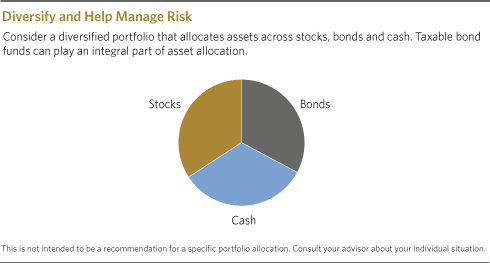Inverse Bond Funds The Risks and Benefits
Post on: 14 Апрель, 2015 No Comment

You can opt-out at any time.
For years, the option of betting against the bond market was only available to institutions and the most sophisticated investors. Today, the explosion in exchange-traded products (ETPs) provides individuals with a large – and growing – number of ways to express negative sentiment regarding bonds. This is possible through inverse exchange-traded funds (ETFs) and exchange-traded notes (ETNs) that move in the opposite direction of the underlying security. In other words, the value of an inverse bond ETP rises when the bond market falls, and vice versa. For instance, if the 10-year U.S. Treasury note fell 1% in a given day, an inverse 10-year Treasury fund would gain 1%.
Types of Inverse Bond Funds
Investors also have the option to invest in double-inverse and even triple-inverse bond ETFs, which are designed to move two or three times in the opposite direction of their underlying index, respectively, on a daily basis. A -1.0% move in the index would translate into a gain of approximately 2.0% for a double-inverse fund and 3.0% for a triple-inverse fund. As would be expected, such products carry both higher risk and higher return potential than their one-time inverse counterparts.
Investors to do more than just bet against the bond market as a whole. Instead, there is a wide range of options that enable investors to capitalize on downturns in U.S. Treasuries of different maturities as well as different segments of the market (such as high-yield bonds or investment-grade corporate bonds ).
Risks of Inverse Bond Funds
Inverse ETPs provide investors with a greater number of options, but also a greater number of potential dangers. First, betting against a particular market segment is, by its nature, a sophisticated strategy that may not be appropriate for all investors. Before buying such a product – and in particular one of the leveraged funds – be sure to assess your risk tolerance and make sure you understand that inverse ETFs are designed to be short-term trading vehicles.
Also, don’t forget that although they are bond funds. the leveraged versions are highly volatile in nature. For example, in the interval from July 25 to September 22, 2011, the yield on the 10-year Treasury note fell from 3.00% to 1.72% as its price rose. During that same interval, the price of Daily 7-10 Year Treasury Bear 3x Shares (ticker: TYO), a triple-inverse ETN, fell from $38.23 to $28.02 – a loss of 26.7%. Make sure you can tolerate this type of volatility before you invest.
Risks of Double and Triple Inverse Bond Funds
Investors also should be aware that the two- and three-times inverse funds only provide the expected inverse performance on single days. Over time, the effect of compounding means that investors won’t see performance that is exactly two or three times the opposite of the index. In fact, the longer the time period, the greater the divergence between actual and expected returns.
A quick example: in a single day, an inverse Treasury ETF might lose 2% if the market rises 1%. Over a month, the return might be -6% (not -4%) on a 2% loss for the market. In a year, an investor may see a -26% (not -20%) loss on a 10% downturn in the market. This is only a hypothetical, but it illustrates the divergence that can occur over time. This is the most important reason why the leveraged inverse funds shouldn’t be considered long-term investments.
Below is a list of the inverse fixed income exchange-traded products. There is some overlap here, as in some cases two different companies have offered inverse ETFs covering the same market segment; for instance, TBX and TYNS.
One-time (-100%) Inverse Treasury ETFs and ETNs
- iPath US Treasury Long Bond Bear ETN (DLBS)
- ProShares Short Barclays Capital 20+ Year U.S. Treasury Index Fund (TBF)
- Direxion Daily 20 Year Treasury Bear 1x Shares (TYBS)
- Direxion Daily Total Bond Market Bear 1x Shares (SAGG)
- iPath US Treasury 10-year Bear ETN (DTYS)
- Direxion Daily 7-10 Year Treasury Bear 1x Shares (TYNS)
- ProShares Short 7-10 Year Treasury (TBX)
- iPath US Treasury 2-year Bear ETN (DTUS)
- iPath US Treasury 5-year Bear Exchange Traded Note (DFVS)
Two- and three-times (-200% and -300%) Inverse Treasury ETFs and ETNs
- ProShares UltraShort Barclays 20+ Year Treasury (TBT)
- ProShares UltraShort 7-10 Year Treasury Bond ETF (PST)
- ProShares UltraShort 3-7 Year Treasury 2x (TBZ)
- ProShares UltraPro Short 20+ Year Treasury 3x (TTT)
- PowerShares DB 3x Short 25+ Year Treasury Bond ETN (SBND)
- Direxion Daily 7-10 Yr Trsy Bear 3X Shrs (TYO)
- Direxion Daily 20+ Yr Trsy Bear 3X Shrs (TMV)
- ProShares UltraShort TIPS ETF (TPS)
Non-Treasury Short ETFs
- ProShares Short Investment Grade Corporate (IGS)
- ProShares Short High Yield (SJB)
- PowerShares DB Inverse Japanese Govt Bond Future (JGBS)
- PowerShares DB 3x Inverse Japanese Govt Bond Future (JGBD)














